41 Three Tuns Lane, Formby, Merseyside, L37 4AQ
The Formby lighthouse tower was built in 1719, soon after the completion, a little further along the coast, of the first Liverpool dock. Originally just a landmark for shipping, the tower was later converted (1831) into a lighthouse, with the lighthouse-keeper also in charge of Formby’s lifeboat station, reputedly the world’s first. The light was finally turned off in 1859 and removed. The tower was pulled down during World War II, preventing its use as a guide to enemy aircraft.
A photograph and text about Molly Gourlay.
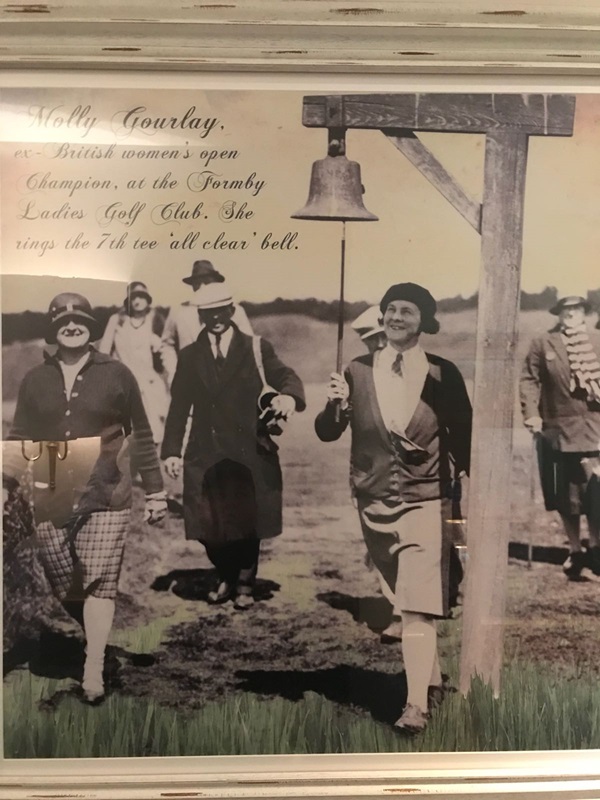
The text reads: Molly Gourlay, ex-British women’s open champion, at the Formby Ladies Golf Club. She rings the 7th tee ‘all clear’ bell.
Photographs and text about the Picturedrome.
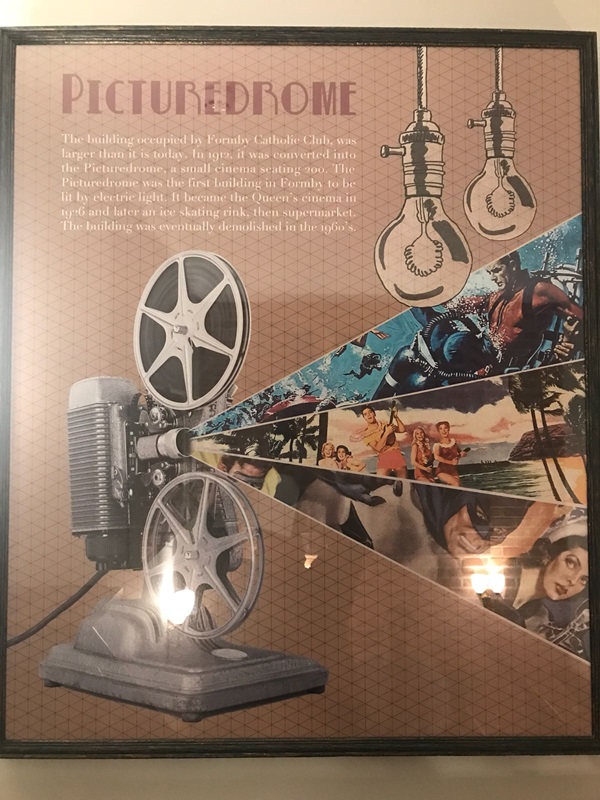
The text reads: The building occupied by Formby Catholic Club, was larger than it is today. In 1912, it was converted into the Picturedrome, a small cinema seating 200. The Picturedrome was the first building in Formby to be lit by electric light. It became the Queen’s cinema in 1926 and later an ice skating rink, then supermarket. The building was eventually demolished in the 1960’s.
Prints and text about Freshfield.
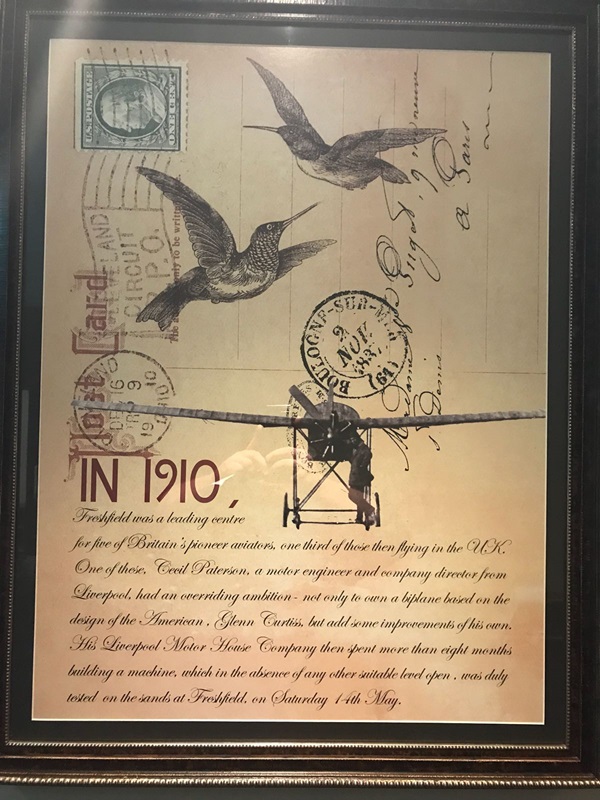
The text reads: In 1910, Freshfield was a leading centre for five of Britain’s pioneer aviators, one third of those then flying in the UK. One of these, Cecil Paterson, a motor engineer and company director from Liverpool, had an overriding ambition – not only to own a biplane based on the design of the American, Glenn Curtiss, but add some improvements of his own. His Liverpool Motor House Company then spent more than eight months building a machine, which in the absence of any other suitable level open, was duly tested on the sands at Freshfield, on Saturday 14 May.
Prints and text about Formby Lifeboat Station.
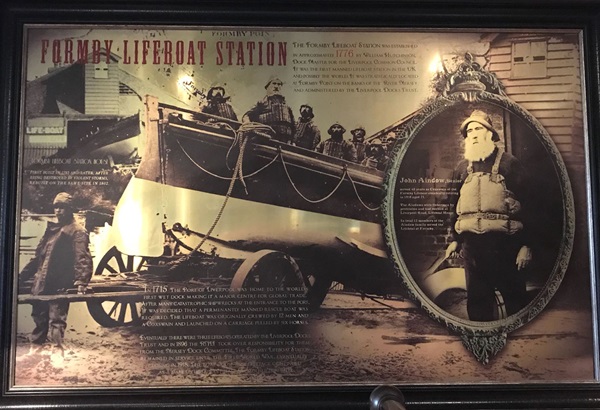
The text reads: The Formby Lifeboat Station was established in approximately 1776, by William Hutchinson, Dock Master for the Liverpool Common Council. It was the first manned lifeboat station in the UK and possibly the world. It was strategically located at Formby point on the banks of the River Mersey and administered by the Liverpool Docks Trust.
First built in 1793 and later, after being destroyed by violent storms, rebuilt on the same site in 1802.
In 1715, the Port of Liverpool was home to the world’s first wet dock making it a major centre for global trade. After many catastrophic shipwrecks at the entrance to the port, it was decided that a permanently manned rescue boat was required. The lifeboat was originally crewed by 12 men and a coxswain and launched on a carriage pulled by six horses. Eventually there were three lifeboats operated by the Liverpool Docks Trust and in 1896 the RNLI took over responsibility for them from the Mersey Dock Committee. The Formby Lifeboat Station remained in service until the First World War, eventually closing in 1918. The boathouse and cottage continued as a café until it was finally demolished in 1970.
John Aindow served 48 years as coxswain of the Formby Lifeboat eventually retiring in 1910 aged 71. The Aindows were fisherman by profession and had resided at Liverpool Road, Lifeboat House. In total 13 members of the Aindow family served the Lifeboat at Formby.
A collection of old photographs of Formby.
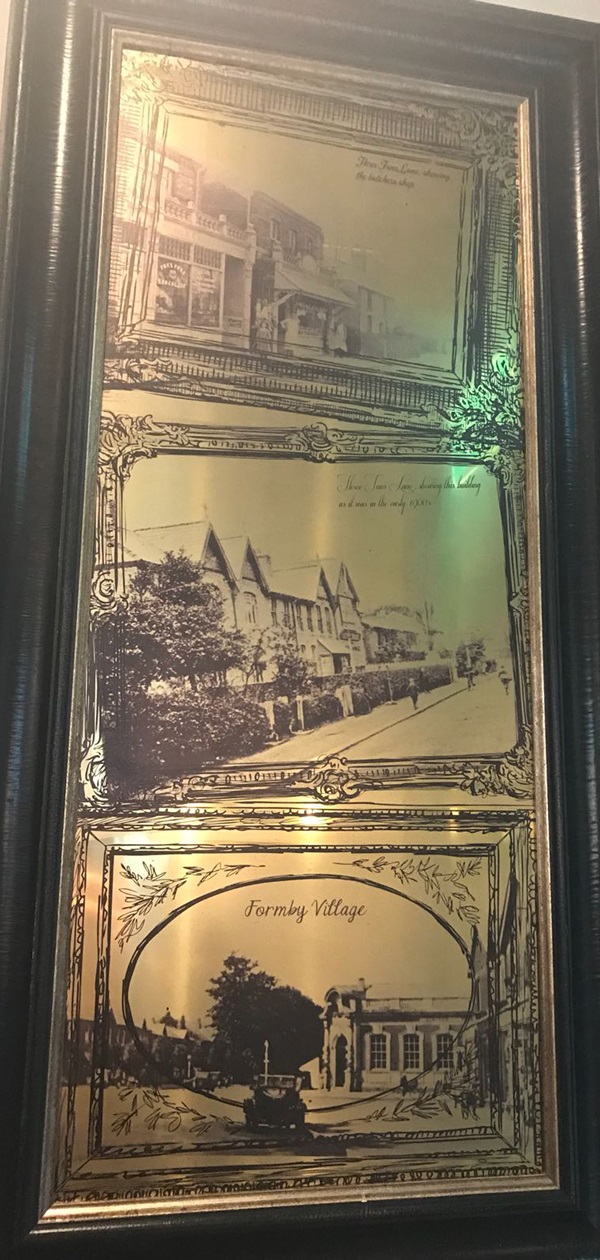
These photographs were taken during the early 1900s.
External photograph of the building – main entrance.
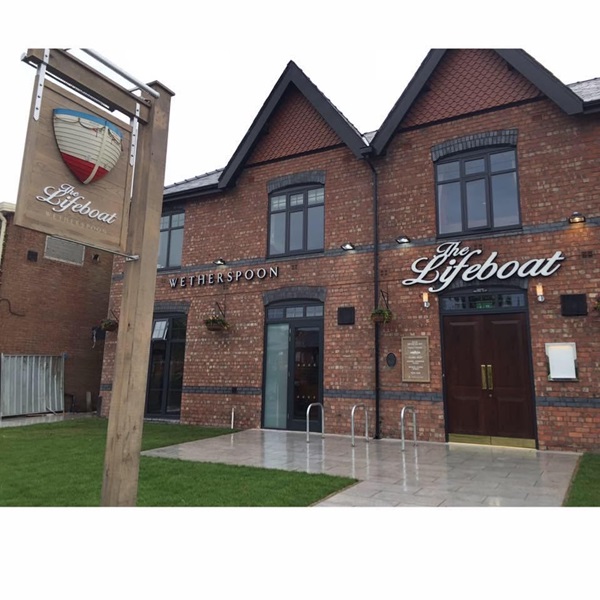
If you have information on the history of this pub, then we’d like you to share it with us. Please e-mail all information to: pubhistories@jdwetherspoon.co.uk